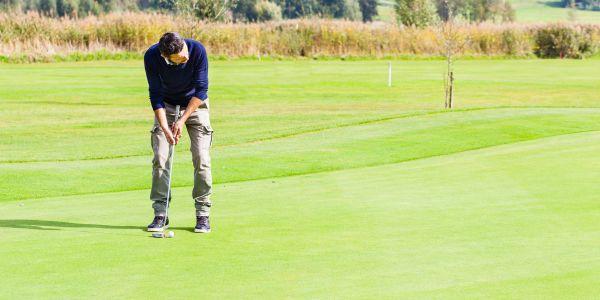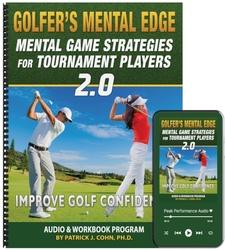
Using Goals to Improve Your Golf Game
Do you want to shoot lower scores? Of course you do!
One reason golfers like to play is to see how much they can improve their score and proficiency in the sport.
Improvement is sought by almost every golfer, from recreational golf to Tour players, no matter how long you have been playing.
You hit the driving range, play extra rounds with your buddies, read magazines on technique, seek out the advice from experts, subscribe to blogs or magazines and watch golf on TV as much as you can to gain some insight on improving your game.
If so much time is dedicated towards improvement, why is it that many golfers fall short in taking their golf game to the next level or achieve better scores?
Two reasons why you may not be seeing the improvement in your game are:
1. Trying to improve too many areas of your game at once.
One of the biggest mistakes golfers make is trying to improve too many parts of their game all at once.
When it comes to improvement, less is more.
If you focus on too many parts of your game at once, you may improve slightly in one area but you never develop mastery in that one area.
True improvement requires focusing on less and doing it more.
You should examine the parts of your game that will give you the most bang for your buck.
That is to say, what skills will advance your game the most and move you to the furthest in the direction of your goals.
Start by looking at your stats, such as fairways, greens, total putts, and up and downs. Decide what part of your game is the weakest and set goals to improve that part.
2. Working on your game at the wrong time or the wrong way.
Improving your golf game is a process that requires patience. There is a time and place to work on skills.
Practice rounds, putting greens, driving ranges and chipping sessions and possibly less competitive rounds of golf are great opportunities to work on your game.
When it matters most, like competitive tournaments, it is time to tune out the coach in your head.
The key to improving your game is balance.
Just look at Tiger Woods for proof.
As the 2018 Tour Championship nears, Woods is looking to improve his game without making major overhauls or dissecting every aspect of his game.
Woods has played in five tournaments in seven weeks and is looking to qualify for the 30-player Tour Championship.
To get into the tournament and to have a good showing at the Tour Championship, Woods needs to focus on certain parts of his game that will benefit him the most down the stretch.
WOODS: “What I’m trying to figure out is how much to practice. I want to work on certain things, but [maybe] I shouldn’t do it. And when I do work on things I’ve got to pick which part of the game to work on.”
Like Woods, all golfers need to know when to work on their golf game and when just to swing their clubs without self-coaching thoughts.
Remember, balance is everything, sometimes you want to train and improve and other times you want to just play golf and score.
Improvement Plan for Golf:
Create an improvement plan. Start by picking 1-2 parts of your game that, when improved, will impact your game the most.
Do an honest assessment of your golf stats. Set simple, measurable goals, such as to improve the number of up and downs you make during a round.
Determine when you will focus on improving these skills.
Set a practice plan based on your goals. Think about the drills to help you achieve the goal.
After a few weeks, assess how you are doing with reaching your new goal. Adjust and set a new goal as needed.
Keep in mind that goals are not set in stone and should NOT become expectations you must reach. Goals help you develop your practice play and strive for a better game.
Related Golf Psychology Articles
- The Mindset of Charging From Behind
- Striving for Small Goals Leads to Improvement
- Mindset for Golf Performance Evaluation
- Subscribe to The Golf Psychology Podcast on iTunes
- Subscribe to The Golf Psychology Podcast on Spotify
Golfer’s Mental Edge 2.0

Do you suffer from fragile self-confidence after missed hitting shots or making mistakes, playing with strict or high expectations that undermine confidence, or the inability to play freely and relaxed on the course?
Successful golfers have learned how to perform with ultimate confidence in competition, so we’ve developed The Golfer’s Mental Edge 2.0 Workbook and Audio program to help you do this!
The Golfer’s Mental Edge 2.0 program includes the top 11 mental training sessions I do with my personal students to help them boost their mental game and improve consistency on the course!